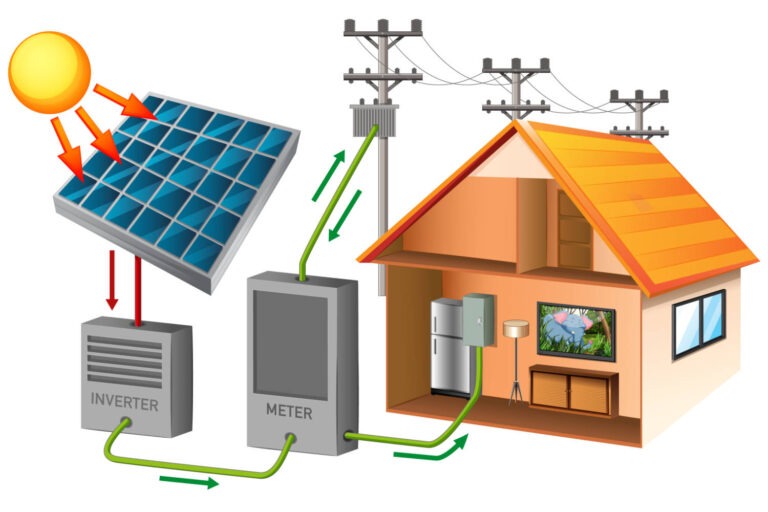HOW DOES A
SOLAR PV SYSTEM WORK?
Using the sun to fuel your energy needs.
The low maintenance, cost-effective energy source!
Solar panels are becoming an evermore common sight on residential and commercial buildings throughout the country. In most instances they will be found attached to south-facing aspects of gable roofs on houses and, perhaps not as visible from the ground, on flat and ‘saw-tooth’ roofs of office buildings, factories and business units.
Outlined on this page is an overview of how this amazing technology works. A more in-depth description of how solar panels work can be found here.
Our Solar Panel Kits for Homes and Solar Panel Kits for Businesses pages include some answers to the most frequently asked questions, however our dedicated Q&A page has more detailed information about all aspects of a home or business solar PV installation and the products on sale here.
If you're unable to find an answer to your query on our website then our expert team is also available during normal business hours to provide guidance and information so please do not hesitate to get in touch!

Light particles hit the solar panels
A solar panel is made up of dozens of Photovoltaic (PV) cells which are constructed from a semi-conductor material such as silicon. When light particles hit the PV cells they push electrons between the positively charged and negatively charged silicon layers, creating an electric field. Conductive metal plates move these electrons from the cell into a circuit, where they flow as electricity.
Feeding the electricity into your home or business
The solar panel-generated electricity is then fed to an inverter, where the direct current (DC) electricity is converted into alternate current (AC) electricity that can be used in your home.
AC electricity on the move to where you need it…
The electricity is then sent through a generation meter to your mains consumer unit (typically a fuse board or fuse box), where it is then distributed to the lights, heating and appliances in your property.
Maintaining a grid connection for flexibility
You will then be able to use your solar-generated electricity in just the same way as you would use electricity sourced from the grid! During periods of low solar electricity generation the shortfall can be made up by the regular grid supply.
Storing or moving surplus electricity
When surplus solar-sourced electricity is generated this can be stored in a battery for later consumption or fed into the grid for use elsewhere.
The key components of a solar PV system
In summary the key components of a home solar panel PV system include a solar panel array (multiple solar panels), mounting mounting rails and clamps to hold the panels in position, cabling, an inverter and, where applicable, battery storage, a generation meter and export limiter.
QUESTIONS? WE'RE HERE TO HELP!
Our friendly team are on hand to help with your enquiries. From choosing the right products to advice on installation and care we're only a click or call away!


